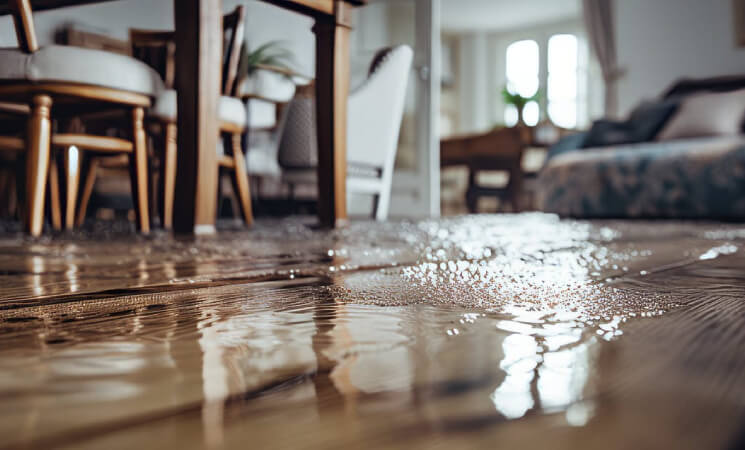As residents of Dallas, Texas, and surrounding areas, we have endured every type of storm there is. Unfortunately, so have our roofs. Whether high winds, hail, or heavy rain are expected to attack your roof, you should look for signs of damage and take the necessary precautions to protect your home or business. Storm damage is unpredictable, but Mr. Restore has a few helpful tips to help you minimize the damage (and related costs) to your roof during a storm.
Pre-Existing Damage
Before necessary precautions are put in place for the next storm, you should examine the current state of your roof. Check your roof for vulnerabilities that could potentially put your home or business at risk for further damage. Texas' weather causes constant wear and tear, but maintaining your roof will help your property resist heavy winds, hail, and rain.
- Check the condition of your shingles – Carefully inspect your roof to make sure there are no missing shingles. Shingles are the most common covering on roofs, usually overlapping and made of a variety of different elements. You should check to see if your shingles are cracked, broken, or curled, often caused by hail and heavy winds. Broken or missing shingles can lead to leaks and water damage inside and outside the home
- Water stains on your ceiling – If you have water stains on the ceiling inside of your home, this could be a sign there is already a leak in the roof. If you have an attic, be sure to check the ceiling and insulation in there as well. You can tell if the source of the leak is from the roof or if the water appears dirty. If it appears fresh, it is probably from a leaky pipe.
- Check the condition of your flashings – Flashings are waterproof metal or plastic liners designed to prevent water from entering the inside of your home. They are used to redirect the precipitation away from your roof and are located at the intersections of your roof. Check to be sure that your flashings are not cracked or damaged, which could lead to further water damage.
- Precautions – After you have checked for pre-existing damage, you can begin to take the precautions needed to prevent damage caused by an upcoming storm on your roof. Many accidents and harmful situations can be avoided during a wind, hail, or rain storm.
- Check surrounding trees – If you notice any tree branches that extend close to your home, it would be smart to remove them. In fact, the American Red Cross advocates trimming all trees close to your property before any type of storm to stay safe. Strong winds can easily cause the nearby branches to sway or break; these branches can projectile towards your home, damaging or penetrating your roof.
- Clear out gutters – Many people forget about cleaning out their gutters and drainage systems before a storm. Clogged gutters from leaves, dirt and other debris can cause backed-up precipitation to overflow. This collection of water results in puddles collecting on your roof, which leads to water damage and leaks. A simple gutter scoop from your local hardware store works perfectly for cleaning downspouts and gutters.
Unfortunately, even the most prepared properties sometimes find themselves no match for a severe storm. In an event where wind, hail, and heavy rain lead to any type of damage to your roof, save yourself time and money and contact Mr. Restore. Dealing with storm damage to your home or business can have impacts lasting for weeks. Restoring your roof requires the aggressive, fast-responding, and repair service only Mr. Restore provides!






